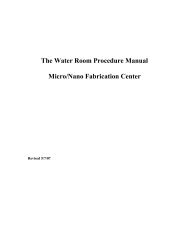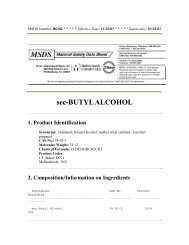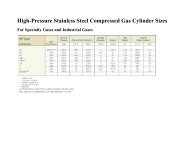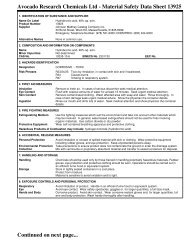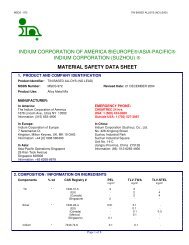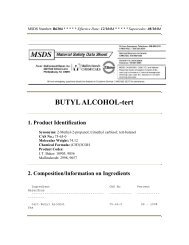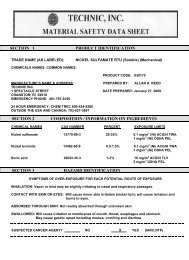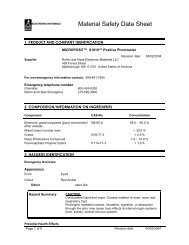Digital Temperature Controller Reference Manual
Digital Temperature Controller Reference Manual
Digital Temperature Controller Reference Manual
You also want an ePaper? Increase the reach of your titles
YUMPU automatically turns print PDFs into web optimized ePapers that Google loves.
3.3.3 Recipes<br />
DTC CONFIGURATION<br />
As of DTC version 2.I an unlimited amount of temperature recipes can be stored. Older<br />
DTC’s can store a maximum of 16 recipes. The recipes can be selected manually with the<br />
Touch Screen or TSC-II or automatically via the DPC or by using the digital inputs on the<br />
rear connector if no DPC is present.<br />
All the zones include ramping as part of the recipes, thus ensuring the temperature rises at a<br />
controlled rate. This prevents furnace, tube or muffle damage due temperature shock. An<br />
external timer can switch the DTC from one recipe to another. This can be used as an energy<br />
saving feature that allows the temperature of the furnace to be lowered at nights and<br />
weekends.<br />
3.4 Independent or Master/Slave Control<br />
The control zones normally operate in the Independent (I) mode. In this case, all the zones<br />
are completely independent of each other. However, the possibility exists to operate four or<br />
five zones (Slaves) under the control of another (Master). This is known as Master/Slave<br />
Control (MS). In this configuration the center zone (2 in a 3-zone furnace, 3 in a 5-zone<br />
furnace) is the master.<br />
All other zones operate normally as if they were independent zones. However, if during a<br />
ramp up or a cool down the master cannot follow its temperature setpoints, the Master/Slave<br />
loop becomes active. The deviation of the master from its setpoints is subtracted from the<br />
temperature setpoints of the slaves. This results in the same actual temperature for all three<br />
zones.<br />
When the furnace is not ramping, the Master/Slave loop becomes active if the deviation<br />
from the setpoints in the master is greater than 5 ºC.<br />
This configuration will only work correctly if the master is slower than the slaves. If this is<br />
not the case, either the gain value of the slaves has to be increased or the gain value of the<br />
master has to be decreased.<br />
A comparison of the zone temperatures for both types of control is given in Figure 3-2.<br />
Figure 3-2 Independent and Master/Slave control<br />
DIGITAL TEMPERATURE CONTROLLER REFERENCE MANUAL 3-4



